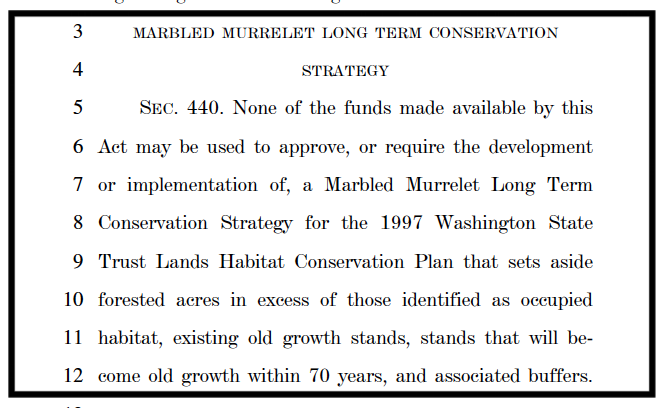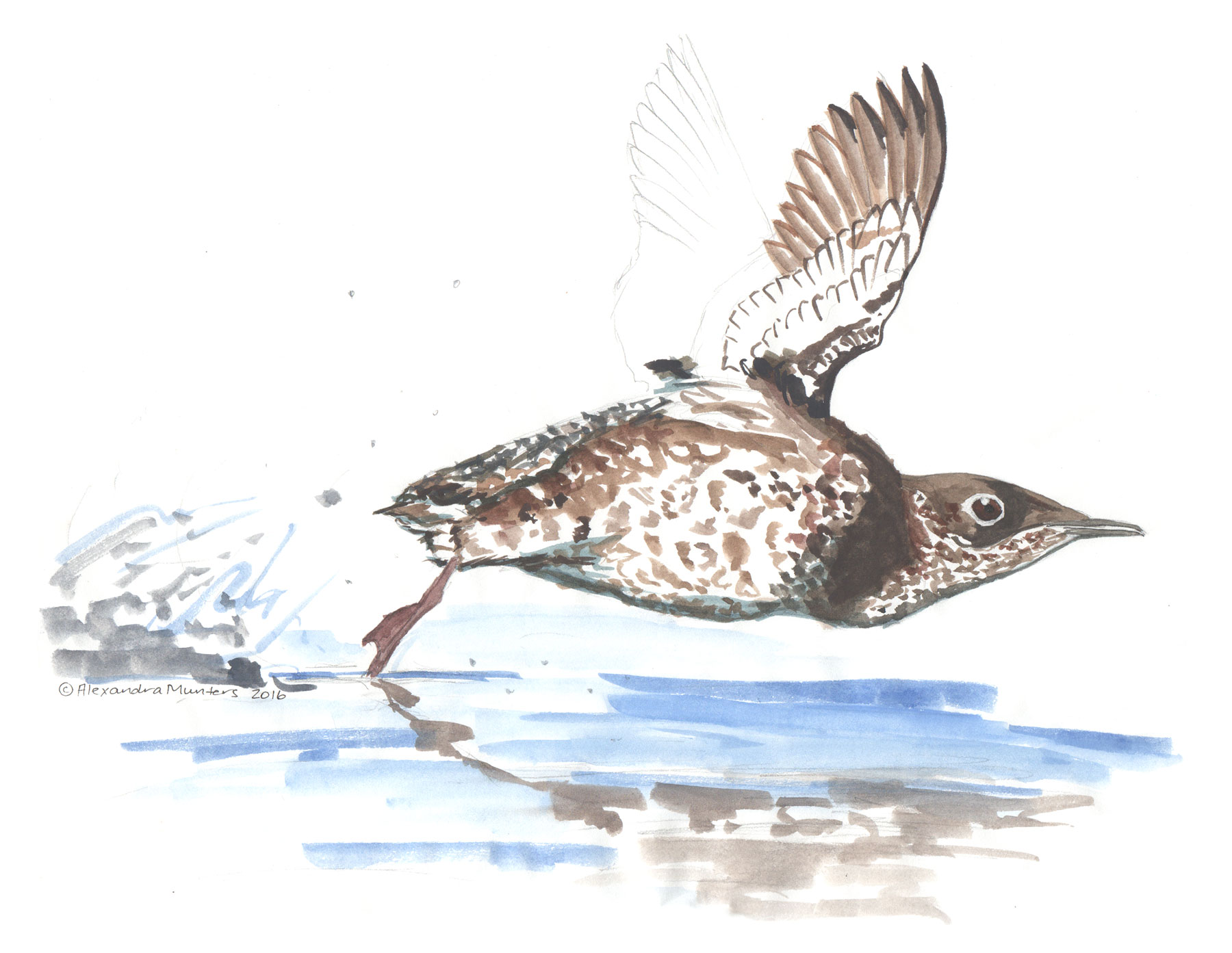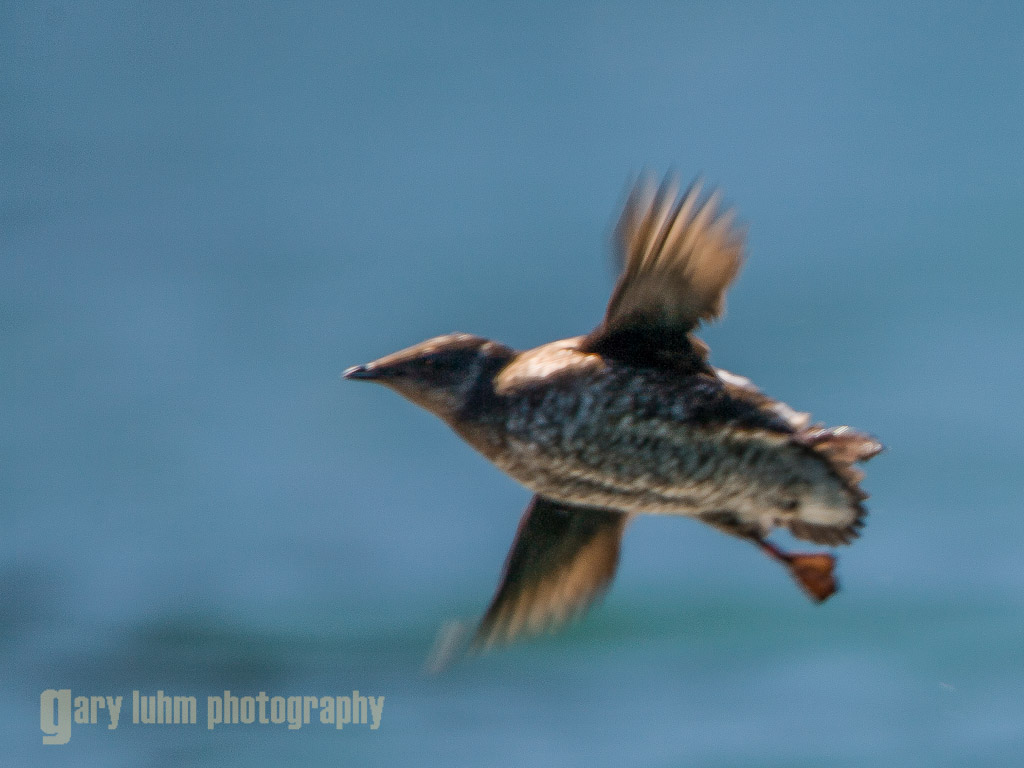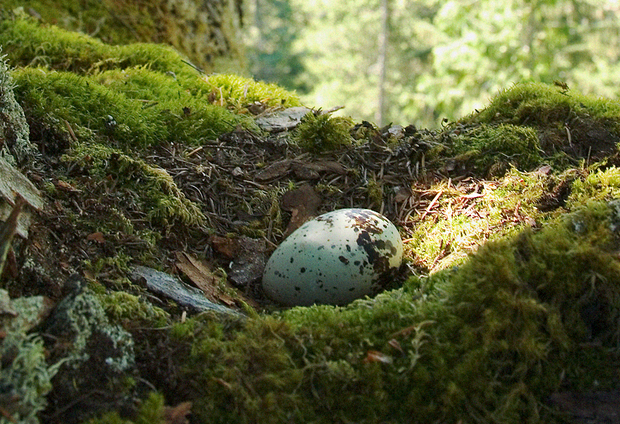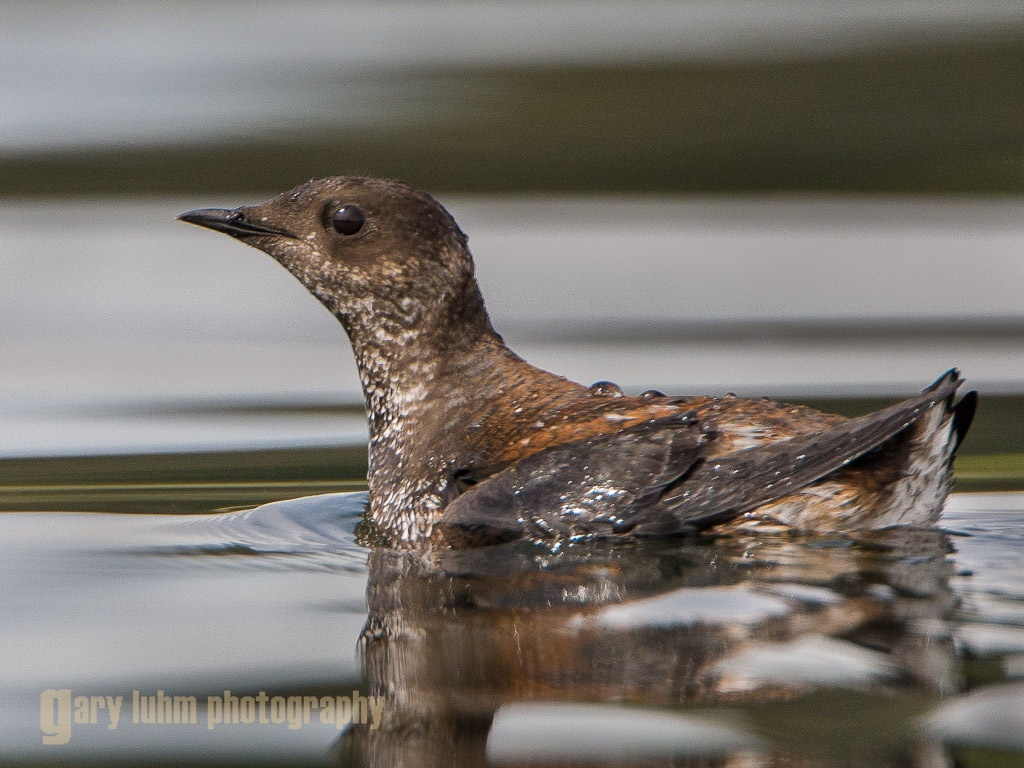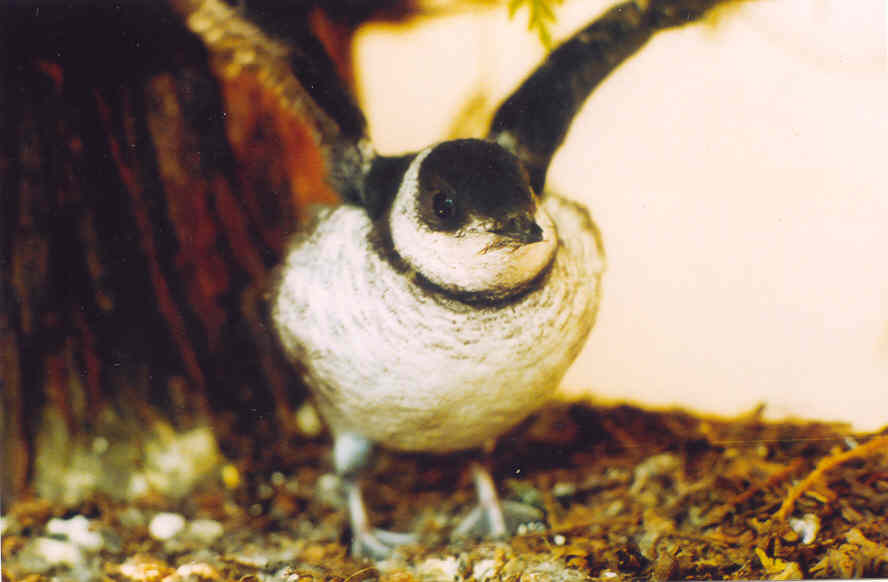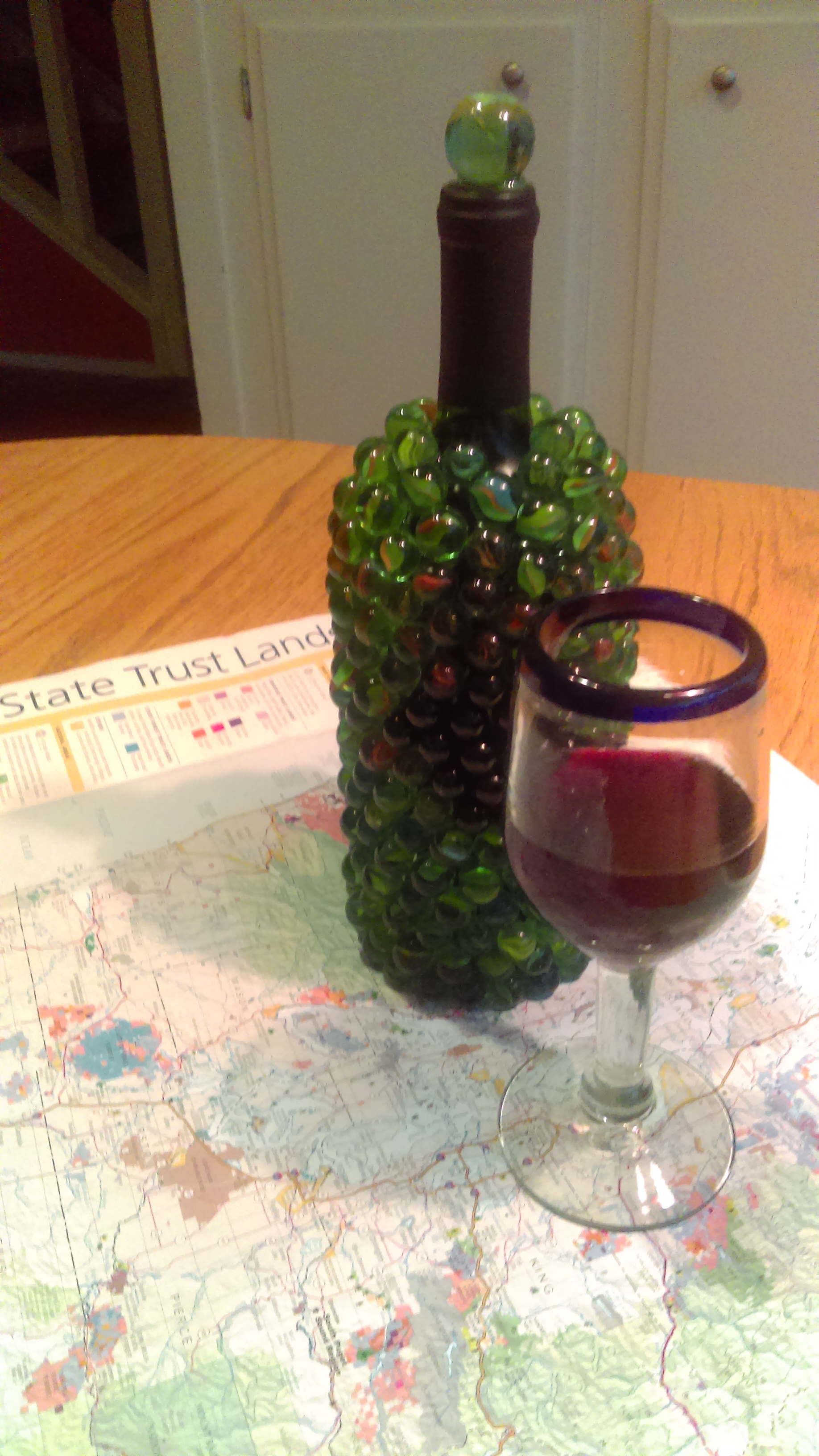There are no holidays celebrating the Marbled Murrelet, unless you count my recent attempt to start “Nest Discovery Day” to honor the date of August 7, 1974, when the nest of this unique seabird was first discovered and documented by scientists. My celebration was just really a “whoohoo!” on social media and silly video involving a friend in a chicken suit, but that’s because I didn’t think to consult anyone at Hallmark, Inc.
The traditional Thanksgiving holiday is mostly about turkey, but the much much smaller and seriously endangered Marbled Murrelet has been the focus of my attention these days and I’m grateful for that. This little wisp of a bird is in the middle of a fight for its life and for the future of the forests where it nests in the Pacific Northwest. The forests murrelets need are described with various terms: old-growth, older, late seral, late successional, mature. The murrelet needs these trees not because of the age or size of the tree itself, but because of the size of the upper branches of these trees. A murrelet doesn’t build a nest but lays its one egg directly on the branch (usually moss covered, but sometimes bare) and so it needs a wide branch where its chicken-sized egg can be safely nestled. And it needs these branches to be at least 50 feet off the ground to keep the nest safe from ground-based predators. Such branches are found in big old trees—coastal redwood, Douglas fir, western hemlock, western red-cedar, Sitka spruce, and other varieties (including the rare occurrence in a big-leaf maple and red alder).
These trees are vanishing and so are the murrelets. Since 2001, we have lost 44% of the murrelet population in Washington state alone. The population continues to decline at the rate of about 4% every year. That might not sound like much, but if you lose 4 of every 100 murrelets every year, it doesn’t take long to get to zero. Zero is not acceptable. This is why, nearly 20 years since I first met the Marbled Murrelet in a photo on the Internet (teehee), 12 years since my book, Rare Bird: Pursuing the Mystery of the Marbled Murrelet was published, and 5 years since it was reissued in paperback…I am still talking about this bird.
I am not talking about Marbled Murrelets to sell copies of Rare Bird. I am talking about this bird because I cannot bear the thought of “losing my marbled”—of having this bird vanish from our oceans and coastal forests. By talking about the Marbled Murrelet I mean I am speaking out for it—to forest management agencies, conservation organizations, library patrons, bookshop audiences, nature-writing workshop attendees, interested friends, and tolerant family members who know I have a difficult time stopping once I start talking about this crazy little bird.
I am grateful to everyone who listens and to everyone who talks about this bird themselves. The most difficult conversations being had right now are the ones between the many people who manage the forests where the murrelet nests, the people who must generate revenue by logging these forests, and those intent on protecting these forest for murrelets. Not that opinions break cleanly along these lines. The subject of how to manage murrelets makes for complex, messy, fraught, long, interrupted, and frustrating conversations. I have been part of many of these conversations. Everyone feels trapped between a rock and hard place, facing a binary choice between saving the murrelets from extinction (possibly in our lifetime) or merely slowing down the decline to a rate we define as tolerable—the rate that will keep our children or grandchildren from cursing us.
I am grateful for the Marbled Murrelet itself for luring me to the west coast, into the deep forests where it nests and into these conversations about others about biodiversity, old-growth ecosystems, the Endangered Species Act, why birds matter, and the subtle and serious impacts of climate change on murrelets and our forest. The murrelet has given me the opportunity to think long and hard about my role as a steward and advocate, about how to walk the talk, how to resist “slacktivism” and eco-burnout, and how to let my heart go “zing” whenever I see this rare bird in the wild or in a photograph.
Who ever you are and how ever long your “life list,” let a bird into your heart. Let it live there a while. Soon it will let you know what it needs from you to survive. And what it needs is likely to be exactly what we need to survive. Listen. And give thanks.



